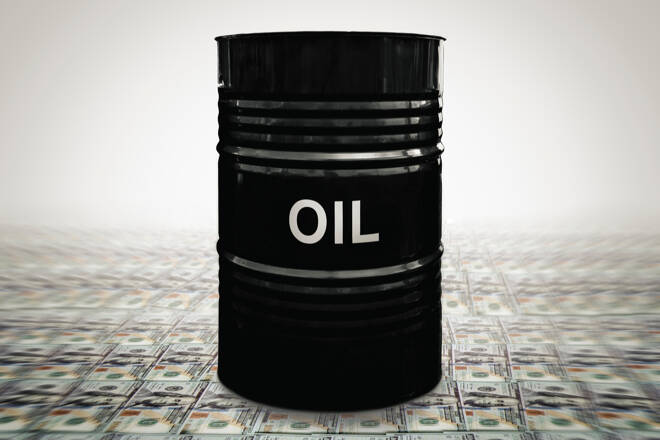Advertisement
Advertisement
Crude Oil News Today: Strong US Economy Bolsters Demand Prospects
By:
Key Points:
- OPEC+ decision stabilizes oil prices despite geopolitical tension.
- Positive U.S. economic data points to increased oil demand.
- Unexpected rise in U.S. crude inventories caps prices.
Global Supply Constraints and OPEC+ Strategy
Oil prices are holding steady on Thursday, largely influenced by OPEC+’s decision to maintain its current output policy. This adherence to output cuts is critical amidst the recent Ukrainian attacks on Russian refineries, which have disrupted fuel supplies, and ongoing Middle East tensions.
At 10:36 GMT, Light Crude Oil Futures are trading $85.32, down $0.11 or -0.13%.
U.S. Economic Indicators and Federal Reserve Stance
The U.S. economic outlook plays a key role in shaping global oil demand. Federal Reserve Chair Jerome Powell’s cautious stance on future interest rate cuts, following reports of robust job growth and inflation, signals a potentially stronger U.S. economy. This is a positive sign for oil demand, as the U.S. remains the world’s largest oil consumer.
Inventory Fluctuations and Market Reaction
Contrary to expectations of a drawdown, U.S. crude oil inventories saw an unexpected increase of 3.2 million barrels in the week to March 29. This development has slightly tempered the upward price movement, underscoring the market’s sensitivity to inventory changes.
Geopolitical Tensions and Regional Impacts
Tensions in the Middle East, especially between Iran and Israel, continue to cast a shadow over the market. Iran’s vow of revenge following an attack that killed high-ranking military personnel adds to the geopolitical risk premium. This is particularly significant given Iran’s status as OPEC’s third-largest producer.
Short-term Market Forecast
Considering these factors, the short-term outlook for the oil market appears bullish. The disciplined output strategy by OPEC+, coupled with positive economic signals from the U.S., lays a strong foundation for price support. However, traders should remain vigilant of the geopolitical landscape and inventory data, which could introduce volatility and affect short-term price dynamics. The market’s current trajectory suggests a continued uptrend, but with caution warranted given the complex interplay of these factors.
Technical Analysis
Light crude oil futures are lower on Thursday after encountering resistance at $86.20 the previous session. This is just slightly above a cluster of resistance from the same area in October.
If buyers can clear the resistance then upside momentum could drive prices into the next barrier at $88.21 to $89.49.
A failure to sustain the upside momentum could encourage selling pressure with $82.28 the nearest support level.
About the Author
James Hyerczykauthor
James Hyerczyk is a U.S. based seasoned technical analyst and educator with over 40 years of experience in market analysis and trading, specializing in chart patterns and price movement. He is the author of two books on technical analysis and has a background in both futures and stock markets.
Did you find this article useful?
Latest news and analysis
Advertisement
